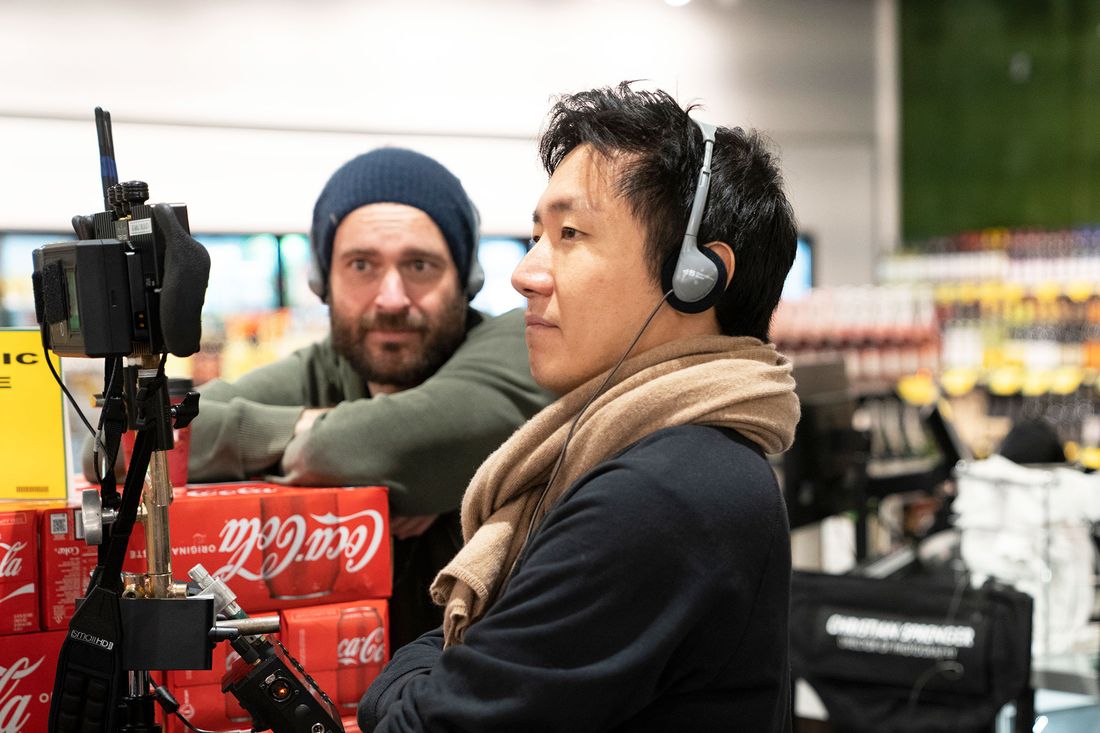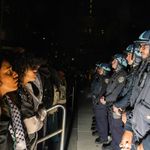
The series Station Eleven is the inverse of everything we’ve come to expect from the postapocalyptic genre. Rather than a gray, desaturated landscape, the show’s post-pandemic world is lush, green, alive. It occasionally depicts the magnitude of the catastrophe, but it is mostly about small things: the mundanity of the apocalypse inside a small midwestern airport, a marriage that is falling apart. “It isn’t this Cormac McCarthy–bleak desert landscape,” director Hiro Murai says. “It has, weirdly, a childlike wonder to it.”
Showrunner Patrick Somerville took his cues from the source material. The Emily St. John Mandel book the series is based on follows a handful of characters before and after a near-extinction-level flu wipes out most of humanity. It’s a looping story that slips swiftly from a present-day pandemic to 20 years later then back again. But it is primarily a novel about art and how a ravaged populace would still long for transcendent experiences of beauty and performance. Any dully frightening visual adaptation would be an impoverished iteration of the book’s pragmatic but humane worldview. Its principal characters include Jeevan, a man who has to redefine himself in the new world, and Kirsten, an actress who, in the years after the flu, joins a Shakespearean theater troupe called the Traveling Symphony. One of the novel’s chief ideas is painted on the side of one of the wagons the troupe travels the country in: “Because survival is insufficient.” It is a pandemic novel that refuses to reduce humanity to simple existential fear, and its ideas are concentrated in the figure of Dr. Eleven, a mysterious metafictional spaceman. In Mandel’s book, he is the central character in a graphic novel within the novel also titled Station Eleven. In the series, he is an embodied character, floating in space and watching over the characters from a gracious but far-flung remove.
The biggest obstacle for the show was how to transform Mandel’s detached yet loving tone into a visual vernacular. “Emily’s book has this very interesting tone, where it almost feels like it’s being narrated by this benevolent but distant omniscient presence,” says Murai, who directed two of the show’s ten episodes and created its visual identity, which the three other directors — Jeremy Podeswa, Helen Shaver, and Lucy Tcherniak — used as a framework. Most TV series need to finesse this handoff between the pilot director and the ones who create the rest of the show, but the challenge for Station Eleven was unusual. Because of its circular timeline and disparate story lines, most episodes include scenes shot at other times by other directors. The series could cohere only if there was unity in how each director understood the project.
Murai’s visual template combined Somerville’s picture of an intimate postapocalypse with Dr. Eleven’s presence. He became the show’s omniscient narrator. His perspective was realized through visuals alone without the assistance of a clunky voice-over. His omniscience is subtle, often subliminal, but it turns the many pieces of Station Eleven’s narrative into spokes on a wheel. Even wordless, Dr. Eleven’s presence as a narrator is a form of comforting promise: Someone is watching the characters. Someone cares about them even at the end of the world. “It’s not like The Walking Dead version of things,” says Podeswa, who directed three episodes. For most such shows, he continues, “everywhere holds danger; there’s dark corners everywhere. This is the show without dark corners. Its corners are bright and vibrant.” Station Eleven is a massive collaborative effort, but much of the series’ warmth is shaped by three key visual choices in its first episode.
1.
The Flash-forward Glimpses


Even before Dr. Eleven becomes the show’s explicit narrator, there are visual hints that the series’ point of view is capable of seeing the whole timeline at once. In the pilot, Jeevan (Himesh Patel) and young Kirsten (Matilda Lawler) walk through Chicago just as the flu begins to spread, past a house with a white garage door. Brief flashes interrupt the scene — images of the same landscape two decades later. There are no sound cues to accompany these flashes, and they last for only a few seconds, like a blink of prescience. Somerville calls them “instances of hyperintense, sudden objectivity.”
Initially, there is a foreboding quality to these flash-forward glimpses. The world in them is nearly unrecognizable. Murai describes looking at Joel Sternfeld’s photography as a reference — his “rural Americana street photography of these vacant big-box stores” as well as his images of the High Line. “It felt deserted and wistful,” he says, “but it was also serene and warm.” The second image of the garage doors is so green and appealing that it pushes against the instinct to see the postapocalyptic landscape as frightening.
2.
The Dr. Eleven–Eye View



The first image in this sequence is what Somerville calls “ghost point of view” — the camera is placed in the perspective of the dead. Weeks after the cataclysmic flu, Jeevan and Kirsten venture out for the first time, walking from Chicago across a frozen Lake Michigan.
A more familiar postapocalypse story might have shown them walking amid a landscape full of corpses with the visual emphasis on death and horror. Instead, we see them through the windshield of an abandoned bus, muted and softened by heavy snowfall. That bus is full of death: Before this shot, Jeevan warns Kirsten away and shields her eyes. But the perspective from inside the bus places the viewer within the nightmare without needing to depict it. It is a visual way to hold the weight of the loss that does not sacrifice the hope inherent in Jeevan and Kirsten’s journey.
What happens next, though, is the defining perspective shift for the entire series. Out of that “ghost view,” the scene cuts to a drone shot looking down on Jeevan and Kirsten. It zooms further and further out, encompassing the street, then all of Chicago, then North America and the globe — all of it arrested at the moment the flu struck. Then the camera swoops into a space station hovering above Earth, where Dr. Eleven stands watching it all. “The reason we go out to Dr. Eleven at the end is because you want to know how to receive all these stories,” Murai says. They are not just random stories; they are connected by his care for them and by his respect and attention to what could otherwise seem like trivial parts of their lives.
3.
The Intimate Close-up


After that dizzying zoom out into Dr. Eleven’s space station, the first episode ends by returning to Earth with a leap to 20 years in the future. Kirsten (Mackenzie Davis) is an adult now, sprawled on a sandy hill reading a book. The scene reestablishes the series in a new time and place: A member of the Traveling Symphony crests the hill, calling Kirsten back to rehearsal. It also returns viewers to a sense of closeness. The bright, childlike colors of Kirsten’s shirt, her rapt attention on the book — it is the promise of those flash-forward images from earlier in the episode realized. This postapocalypse is warm, and there’s an implicit sense of safety. In the final shot, we see the book Kirsten reads: the graphic novel with its intertextual Dr. Eleven character centered on the page. Is he this embodied narrator? Is he an invention within the show? The series doesn’t provide answers, but the other way of thinking about him, Somerville says, is as “the most sympathetic storyteller we could ask for about our lives.”





